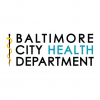Neighborhood Health Profiles - Frequently Asked Questions
Neighborhood Health Profiles - Frequently Asked Questions
Please click here for a complete listing of the Neighborhood Health Profile reports.
What are these reports?
The Neighborhood Health Profiles bring together data about significant health outcomes and present them for each of the 55 Community Statistical Areas in the city of Baltimore. Community Statistical Areas are clusters of neighborhoods developed by the City’s Planning Department based on recognizable city neighborhoods. Each NHP compares the CSA’s health outcomes to the city as a whole. Analysis of these data reinforces that where we live, learn, work, and play has a powerful impact on our health.
Section D provides an overview of demographic information including the total population, age, gender, and race and ethnicity of neighborhood residents. Sections E through J provide data on the social determinants of health, including socioeconomic factors, education, the built and social environment, housing, and the food environment. Section K provides data on health outcomes, including data on life expectancy, mortality and causes of death, and maternal and child health outcomes. Sections L, M, and N summarize how each neighborhood compares to the other neighborhoods across all indicators. Technical notes in Section O provide details on how the data were collected and tabulated.
Why were they developed?
The 2017 Profiles were developed to support community health improvement efforts, emphasizing a wide range of health determinants that have not been traditionally discussed as a part of standard public health practice. The 2017 Profiles will allow the Baltimore City Health Department, residents, and city officials to not only identify priority health issues but also to identify underlying conditions that are more immediately actionable. Presentation of the 2017 Profiles will begin a process whereby BCHD senior staff will facilitate presentations with community groups interested in prioritizing and improving health outcomes. Additionally, the NHP will be made available on the BCHD website so that it may be used by a wide array of community stakeholders.
How were they developed?
Data in the Profiles represents the most up-to-date information available through the following sources: the Maryland Vital Statistics Administration at the Department of Hygiene and Mental Health; the US Census Bureau; the Baltimore Neighborhood Indicators Alliance (BNIA); the Mayor’s Office of Information Technology (MOIT); The Johns Hopkins Center for a Livable Future; Baltimore City Public Schools; and the Maryland Department of the Environment. Data have been combined across recent years to provide more reliable estimates since estimates for areas as small as Community Statistical Areas can vary widely from year to year. Where appropriate, data are age-adjusted to assure that differences reflected are not due to age-specific issues such as related to the elderly population. Further information about data sources and methodology are available in the Technical Notes section.
What are the limitations of these reports?
- Small numbers
Because some neighborhoods have small population sizes in certain age groups, there is the possibility that small differences could produce large differences in rates. We addressed this potential issue by grouping years together and thereby estimating rates using larger numbers. Despite this, there is some uncertainty associated with these estimates due to the small population sizes involved.
- Data availability
These reports only contain data on a select set of health and social determinants indicators among many other possible indicators. Some of the indicators that are of interest, but unavailable at the CSA level include health behaviors such as smoking, diet, exercise, and healthcare-seeking; the prevalence of chronic diseases, disability, drug addiction, and mental illness; air quality measures and stress; and other individual and community-level social determinants such as language ability, health literacy, social support, social capital, and social cohesion.
How much variation exists between neighborhoods in Baltimore?
There is wide variability in major health outcomes between neighborhoods. This map shows the range of life expectancy by neighborhood. In the neighborhoods with the shortest life expectancy, residents died more than 20 years earlier than in the neighborhood with the longest life expectancy. The other health outcomes in the Profiles also show substantial variation.
How can communities use these reports?
Knowledge is power. This information will allow communities to understand the major health challenges facing their own residents and take action. For example, a community might see the enormous impact of heart disease, diabetes, and stroke on mortality and target tobacco use, a leading cause of these conditions.
Please visit this page often to learn about the next steps and view upcoming meetings as we look to continue this important work. Click here to view a summary presentation for Baltimore City.
What are the implications of these reports for the city's approach to health?
There are two main implications of these reports. First, we need to continue investing in the economic development of our communities since economic resources and health are so tightly intertwined. Second, we will use the information to identify communities with particular health needs to target services and outreach.
Supplementary Materials
This page contains links to files that may require additional software to view. You may download a free viewer here.
| City-wide Summary Report, Neighborhood Health Profiles - 2017 | |
| City-wide Summary Report, Neighborhood Health Profiles - 2011 | |
| Map of Avertable Deaths by Community Statistical Area - 2011 | |
| Supplementary Maps, Neighborhood Health Profiles - 2008 | |
| Supplementary Graphs, Neighborhood Health Profiles - 2008 |
Contact
Office of Epidemiology Services
Telephone: 410-361-9580
Address: 1001 E. Fayette Street, Baltimore, MD 21202
Email
